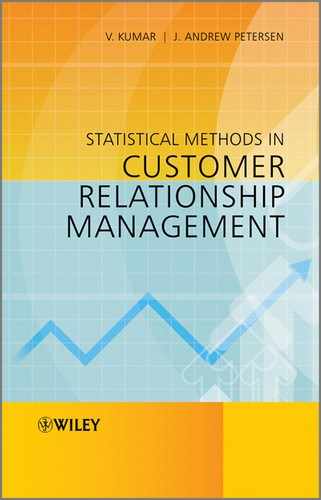1.1 Introduction
Henkel, a European multinational corporation that operates in three business areas (home care, personal care, and adhesive technologies), also operates in a highly competitive, fast-moving consumer-goods industry that also has a global outreach. Some of the key operational challenges include low product margins on its products and a lack of direct customer contact, among other region-specific challenges. Henkel has managed to overcome these challenges by implementing customer relationship management(CRM) practices. Management at Henkel realized the importance of identifying and understanding the needs of individual high-value customers, in order to target, establish, develop, and retain long-lasting relationships with customers. Through these practices, Henkel has actively pursued the development of strong relationships with its customers, and at the same time increased its profitability [1].
Just like Henkel, many corporations are increasingly adopting CRM as a means to forge their competitive advantage – the ability to understand individual customer needs, and therefore to manage their marketing efforts more efficiently. Such firms are also under tremendous pressure to adjust quickly to rapid changes in the marketplace with regard to the customer, technology and marketing functions. Customers are becoming not only more value-conscious, but also less loyal and less tolerant of low service levels. Consequently, markets are becoming more fragmented, making differentiation more difficult and competition more intense. These changes are driving companies to be customer-centric, and shifting their marketing functions from product-based to customer-based ones. At the same time, the exponential growth in data storage technology has made it possible for firms to process a much more substantial amount of customer-level information. All of these changes have had a significant influence on the rapid growth, increasing the awareness and adoption of CRM worldwide.
While most firms recognize the benefits of adopting CRM practices, not all firms have been successful in their CRM implementations. We believe that having the right approach to CRM planning is critical to a firm's success. Over the years, while technology has played a key role in the success of CRM implementation, it is but one component of CRM implementation. An important part of CRM is identifying the different types of customers and then developing specific strategies for interacting with each customer. Examples of such strategies are developing better relationships with profitable customers, not loyal customers. That means locating and attracting customers who will be profitable, and finding appropriate strategies for unprofitable customers, which could mean eventually terminating the relationship with customers who are causing the firm to lose money.
In this book, we discuss CRM and its related strategies from a modeling perspective, with a specific focus on methodologies that can be used to obtain insights on customer metrics within a company's own customer database. To help understand the discussion on CRM models and methodologies, we start this first chapter by providing an overview of CRM and its components. First, we present a formal definition of CRM and discuss the relevant concepts in CRM, such as customer value and customer databases. Next, we explain what is required to implement CRM strategies from a manager's perspective. In essence, managers ultimately want to evaluate their firms' marketing performances based on quantifiable indicators called customer metrics. Managers usually have to go through several data-processing steps before being able to generate the customer metrics they want. In this section, we focus on the database sources, the impact of technology on the implementation process of CRM, as well as providing a list of common customer metrics used to evaluate managerial performance. Finally, we introduce the role of analytical methodologies to help managers with the necessary levers/drivers to maximize the performance metrics.
